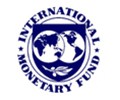The IMF urges Asia to reduce trade barriers to defeat US tariffs

The International Monetary Fund (IMF) on Friday urged Asia to lower non-tariff barriers and integrate regional trade to reduce vulnerability to US tariffs and global financial shocks.
Trade is critical to Asia’s economic growth, with China serving as a supply chain hub for goods production around the world, making it vulnerable to the impact of US-China trade tensions and tariffs imposed by President Donald Trump, the IMF said in its regional economic outlook report for Asia.
Trade frictions with the US and a boom in investment in artificial intelligence have led to increased intra-regional trade in Asia, the report said.
Promoting further regional trade integration, including by removing trade barriers, could help Asian countries diversify export markets, reduce costs and offset some of the barriers caused by tariff shocks, he said.
“If Asia is more regionally integrated, it will give you a buffer against external shocks,” Krishna Srinivasan, director of the IMF’s Asia and Pacific Department, told Reuters.
Asia is highly integrated in intermediate goods trade, with about 60% of total exports taking place in the region, Srinivasan said. In contrast, only 30% of Asian countries’ final goods exports are made in the region – a sign of the region’s dependence on US and European markets, he added.
The report said that Asia could benefit from broader trade agreements, such as those in the European Union, as their current focus on bilateral agreements creates overlapping regulations and inconsistent standards.
Lowering non-tariff barriers, which increased during the COVID-19 pandemic and are still occurring in Asia, could provide considerable benefits, he said.
In fact, several countries are voluntarily reducing non-tariff barriers as part of trade negotiations with the US, which is a “very positive” trend, Srinivasan said.
With greater regional trade integration, Asia could see gross domestic product increase by 1.4% in the medium term, and the Association of Southeast Asian Nations economy by 4%, Srinivasan said.
“There is a silver lining that several countries, which previously had to liberalize, are now liberalizing,” he said.
The IMF forecasts Asia’s economy will grow by 4.5% in 2025, slowing from 4.6% last year but up 0.6 percentage points from its estimate in April, due to strong exports driven in part by front-loading of goods ahead of higher US tariffs.
They expect growth to slow to 4.1% in 2026 due to the impact of trade tensions, weak demand in China and weak private consumption in developing countries.
“While trade policy uncertainty has decreased slightly compared to April, it remains high and could weigh on investment and sentiment more than expected,” the IMF said in its report.
Source: Reuters
